What are the pros and cons of wool carpet?
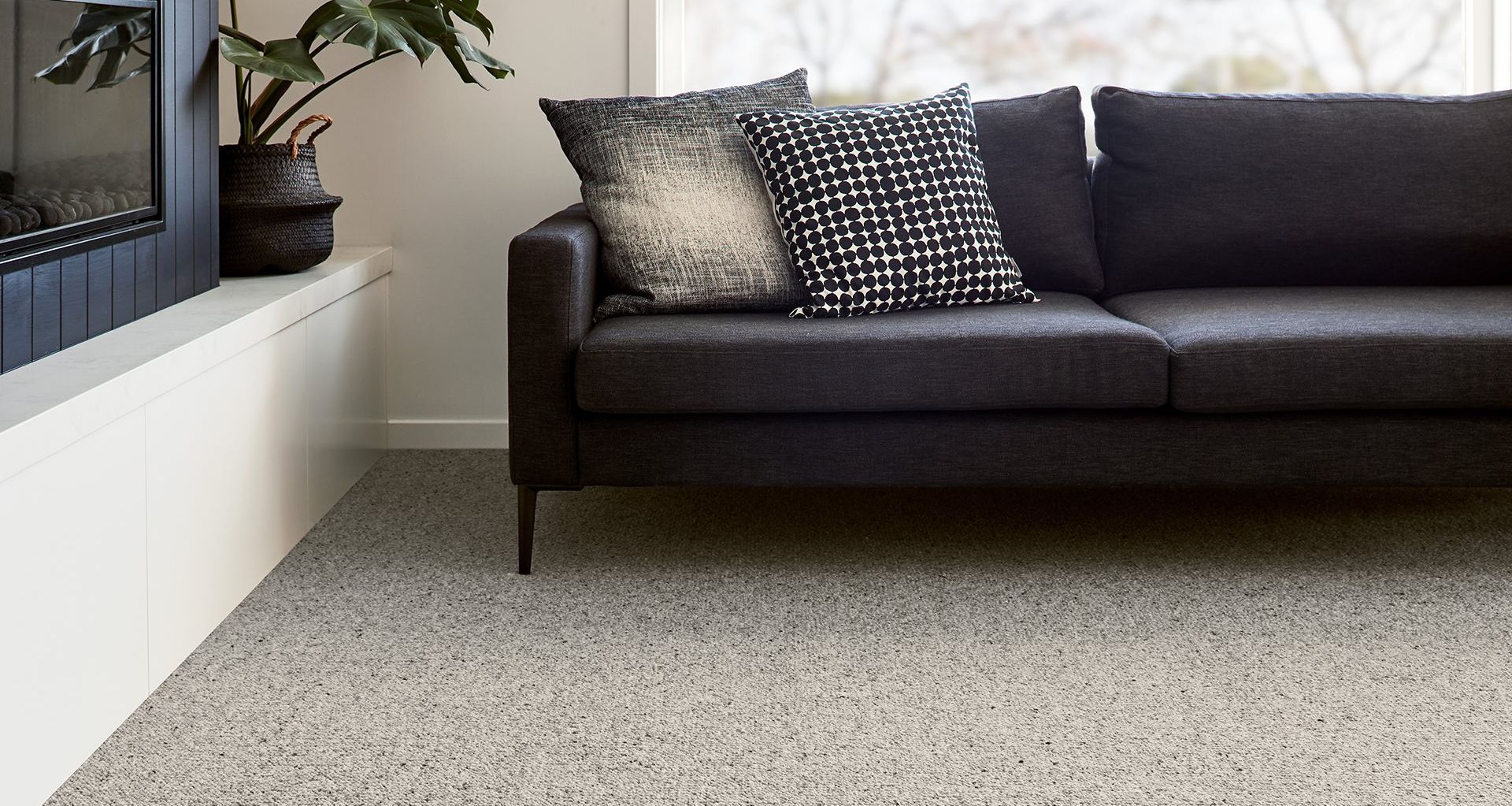
Wool carpets, known for their luxurious texture and exceptional durability, have been a favourite choice for homeowners for centuries. But, like any other type of flooring, wool carpets come with their own characteristics that may or may not suit every household. If you’re considering investing in this type of carpet, it’s good to know the pros and cons to see whether it aligns with your lifestyle and design preferences.

What are the pros and cons of wool carpet
Pros
To start off, let’s take a glance at some of the reasons why wool carpets are a popular carpet choice:
A natural wool carpet is inherently sustainable
Wool is derived from sheep, making it a sustainable resource that can be obtained through annual shearing without harming the animal. Wool carpets also offer environmental advantages due to their biodegradable properties. Wool fibres naturally break down over time without releasing harmful substances, leading to reduced landfill waste and contributing to a more eco-conscious lifestyle.
Luxurious and soft texture
Wool carpets have a luxurious and soft texture. The natural fibres of wool create a plush surface that feels comfortable to walk, sit, or lie down on. Wool's inherent insulating properties make it an excellent choice for creating a cosy and warm environment. The dense composition of wool fibres traps air, acting as a natural thermal insulator that helps to retain heat and keep rooms comfortably insulated during colder months, helping to enhance comfort levels and reduce the need for excess heating.
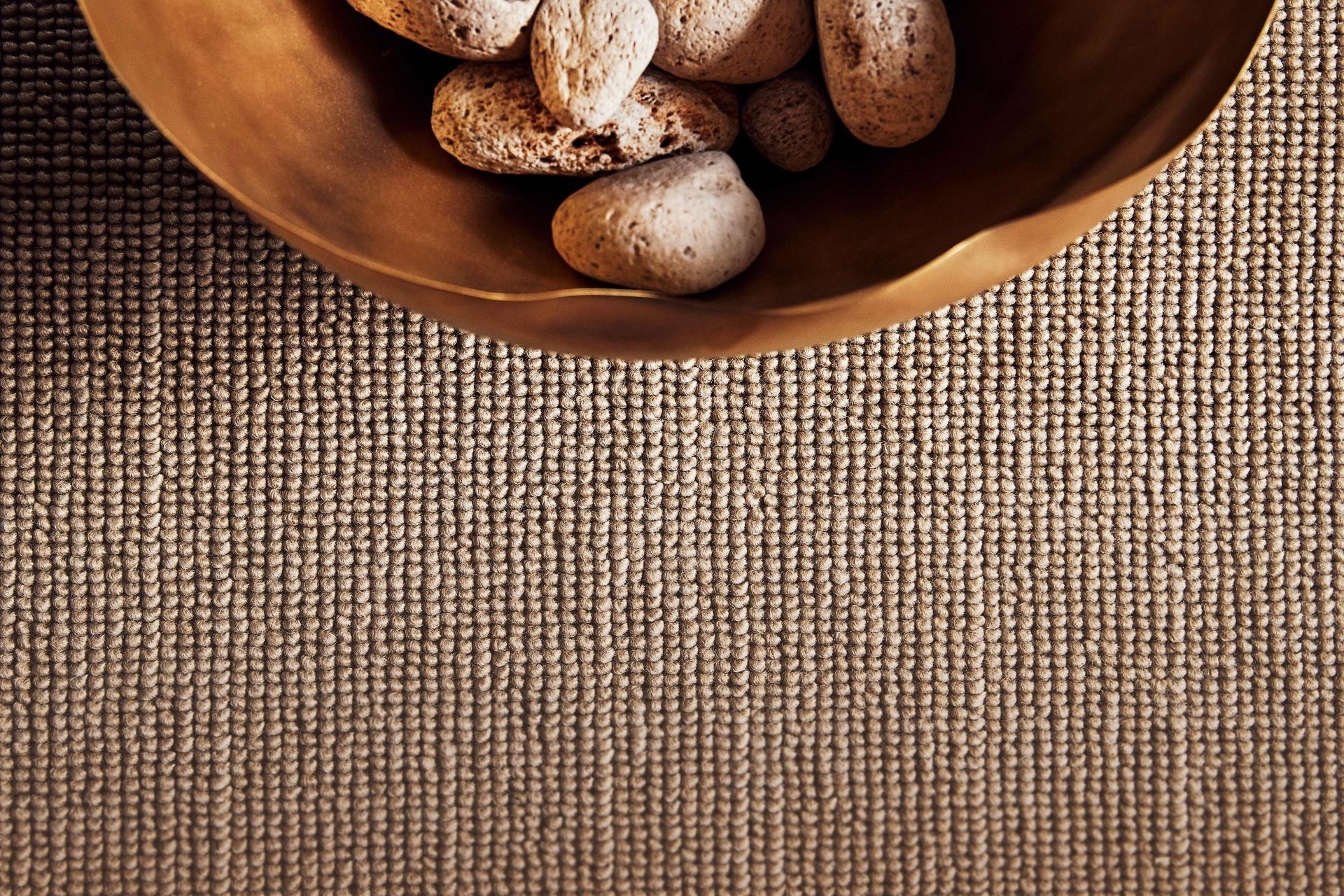
Excellent durability and resilience
Wool carpets are known for their durability and resilience, making them a practical choice for high-traffic areas. The inherent strength of wool fibres allows these carpets to withstand the rigours of daily use without significant wear and tear.
Unlike some other carpet materials that may show signs of flattening or matting over time, wool carpets can retain their shape and appearance, maintaining their original beauty even in the face of heavy foot traffic. This resilience is due to the natural elasticity of wool fibres, which allows them to bounce back and recover from compression, preventing permanent indentations and unsightly imprints.
Superior stain and soil resistance
Wool carpets have superior stain and soil resistance due to the natural properties of wool fibres. The waxy coating called lanolin acts as a repellent, preventing liquids from immediately being absorbed into the fibres. This minimises the chances of stains penetrating the carpet, making clean-up easier and reducing the risk of permanent staining. Most spills can be effectively removed without leaving marks or blemishes.
The structure of wool fibres makes it challenging for dirt and debris to embed deeply, allowing for efficient removal through regular vacuuming. These inherent qualities make wool carpets a practical choice for households with where spills are likely.
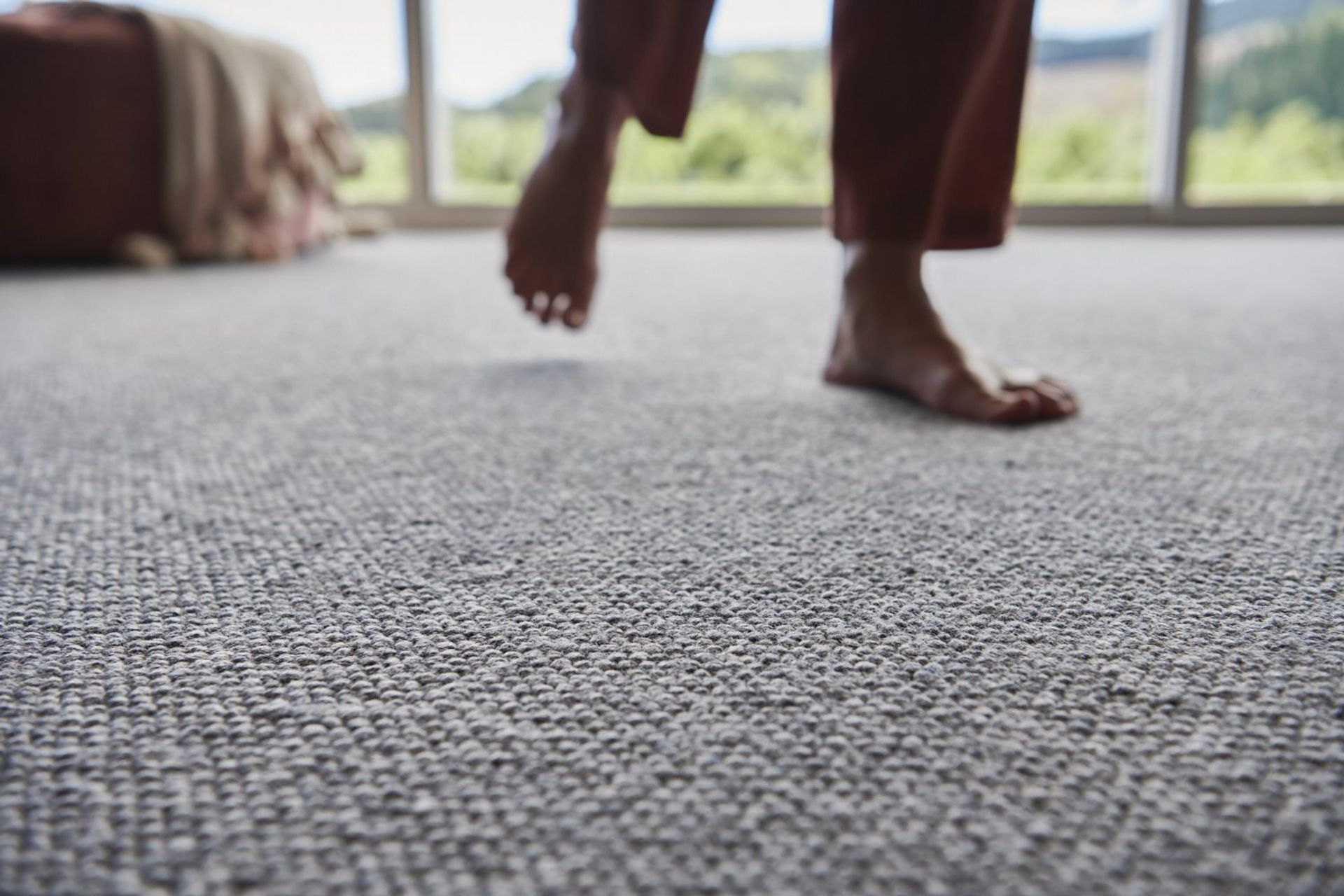
Cons
Having looked at the positives of wool carpet, it's only fair to consider the other side of the coin. Here are some of the drawbacks:
Cost
Cost will be one of the primary factors influencing your decision to purchase a wool carpet. Wool carpeting typically costs more than synthetic carpet alternatives. This is due to the premium quality and natural characteristics of wool.
However, while the upfront cost may be higher, it's important to consider the potential long-term value that wool carpets can provide. Their durability and ability to maintain their appearance over time may offset the initial investment you make.
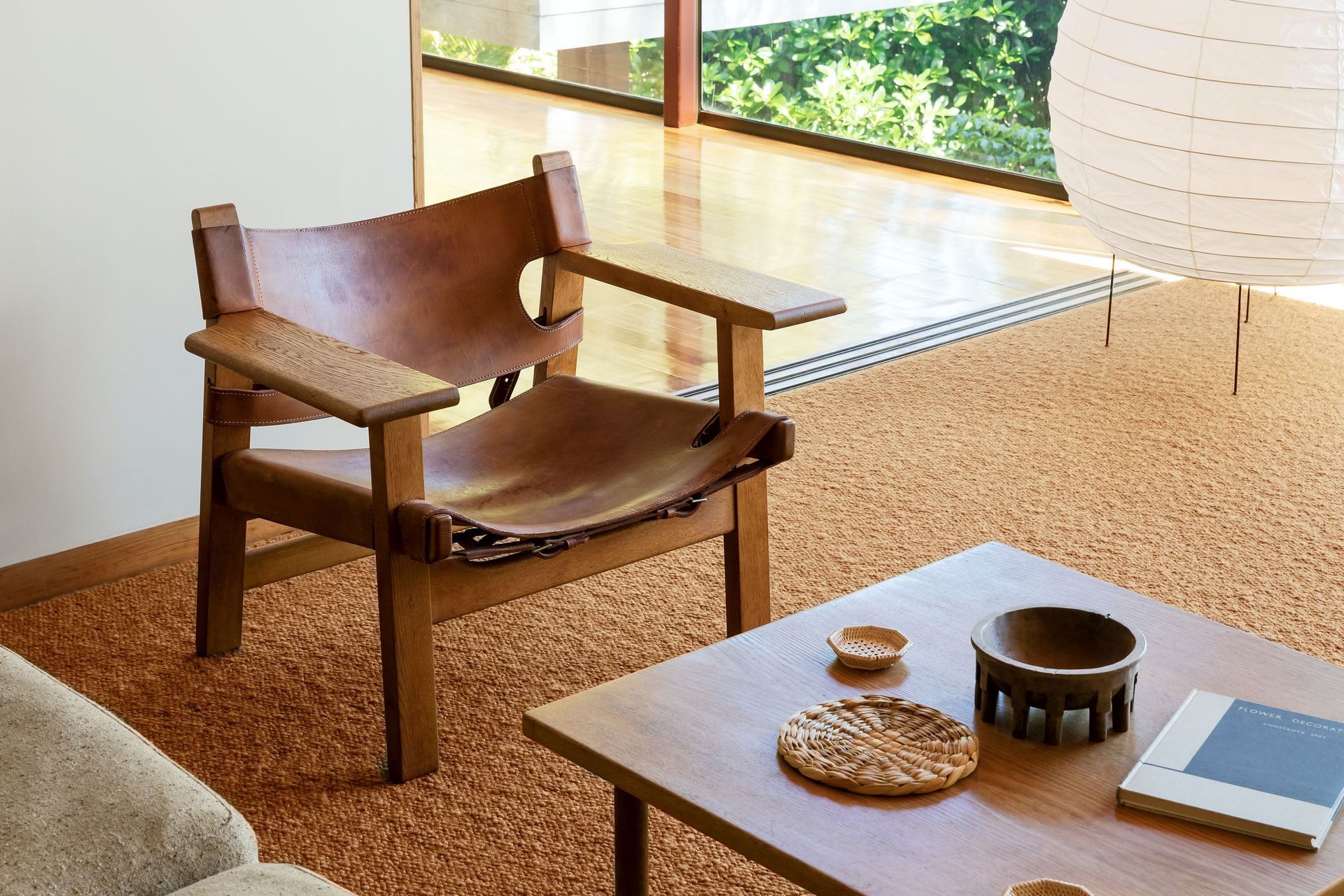
Vulnerability to moisture and mould
Wool fibres have a higher sensitivity to moisture compared to synthetic materials. Excessive exposure to water can cause wool carpets to shrink, stretch, or even develop mould. Proper maintenance and precautions are necessary to prevent potential water damage. Promptly drying any wet spots, using mats or rugs in high-moisture areas, and avoiding excessive moisture contact can help protect wool carpets and maintain their integrity.
Prone to fading and sunlight damage
Another thing to remember with wool carpets is their susceptibility to fading and damage when exposed to direct sunlight for prolonged periods. The UV rays in sunlight can cause the colours of wool fibres to fade and weaken over time. To minimise this risk, it's important to take precautions such as using window coverings like blinds or curtains to limit direct sunlight exposure. Additionally, rotating furniture periodically or UV-blocking window films can further protect against sunlight damage.
Allergies and sensitivities
While wool is a natural material, it can potentially trigger allergies or sensitivities in some individuals. Wool carpets can harbour allergens such as dust mites or pet allergens, which may cause discomfort for sensitive individuals. However, regular cleaning and maintenance, including frequent vacuuming and professional deep cleaning, can help reduce allergen build-up and create a healthier indoor environment. It's important to consider personal sensitivities and take proper measures to address any potential allergy concerns.
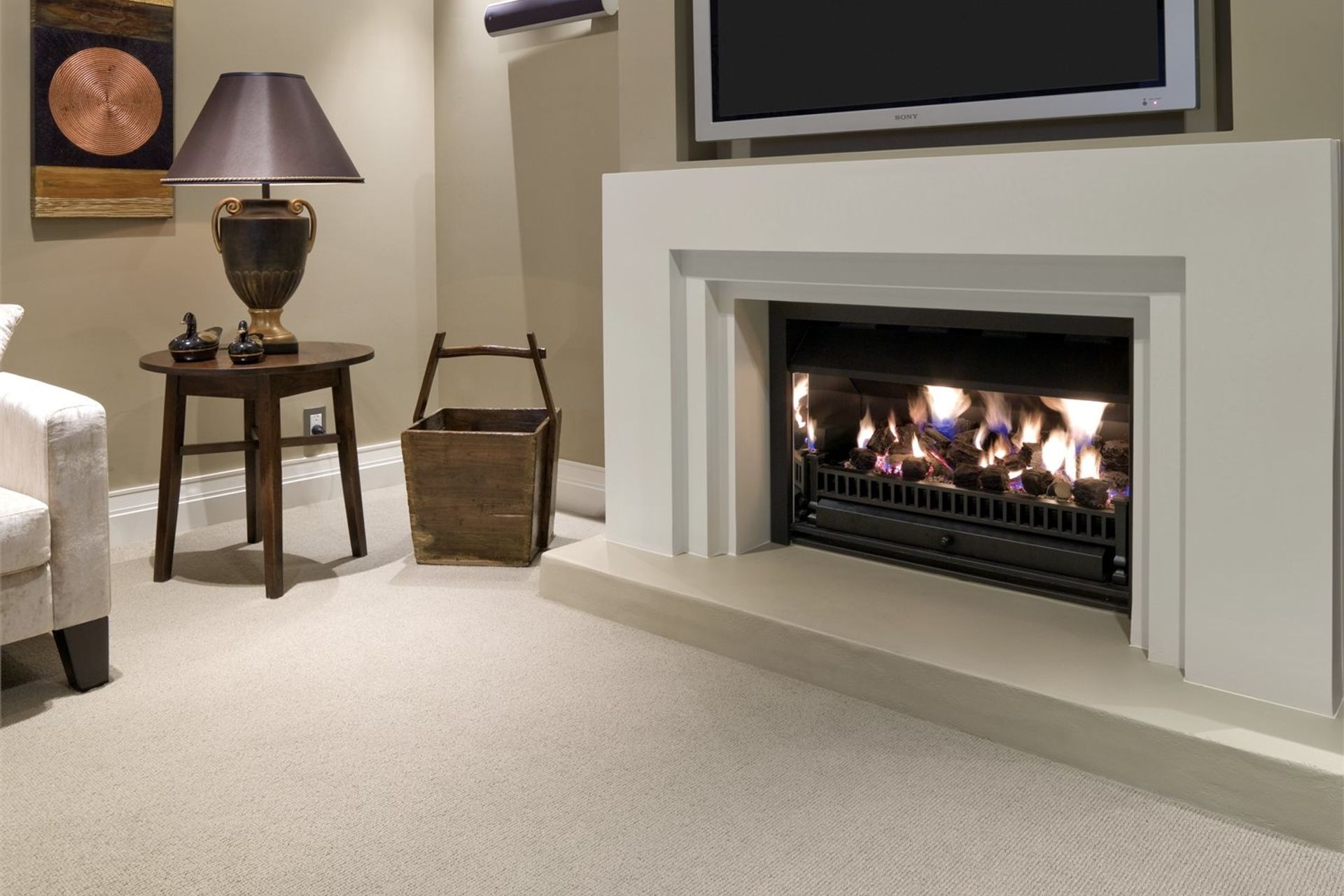
Are all wool carpets 100% natural wool?
Some wool carpets are 100% natural wool. Often they're known as "natural wool" carpets. If you're on the lookout for an all-wool carpet, it is recommended to seek out strong wool derived from either New Zealand or Britain. These two regions offer distinct qualities in their wool: British wool tends to be weighty and textured, while New Zealand wool is soft and pale, making it ideal for light-coloured rugs.
Other wool carpets, commonly called "80/20 wool," consist of a blend where approximately 80% of the fibres are wool and 20% are alternative fibres, usually synthetic. You'll sometimes see these carpets marketed as "wool mix" carpets. Wool blend carpets have gained popularity as they can be more durable and be more resistant to stains than 100% wool carpets.
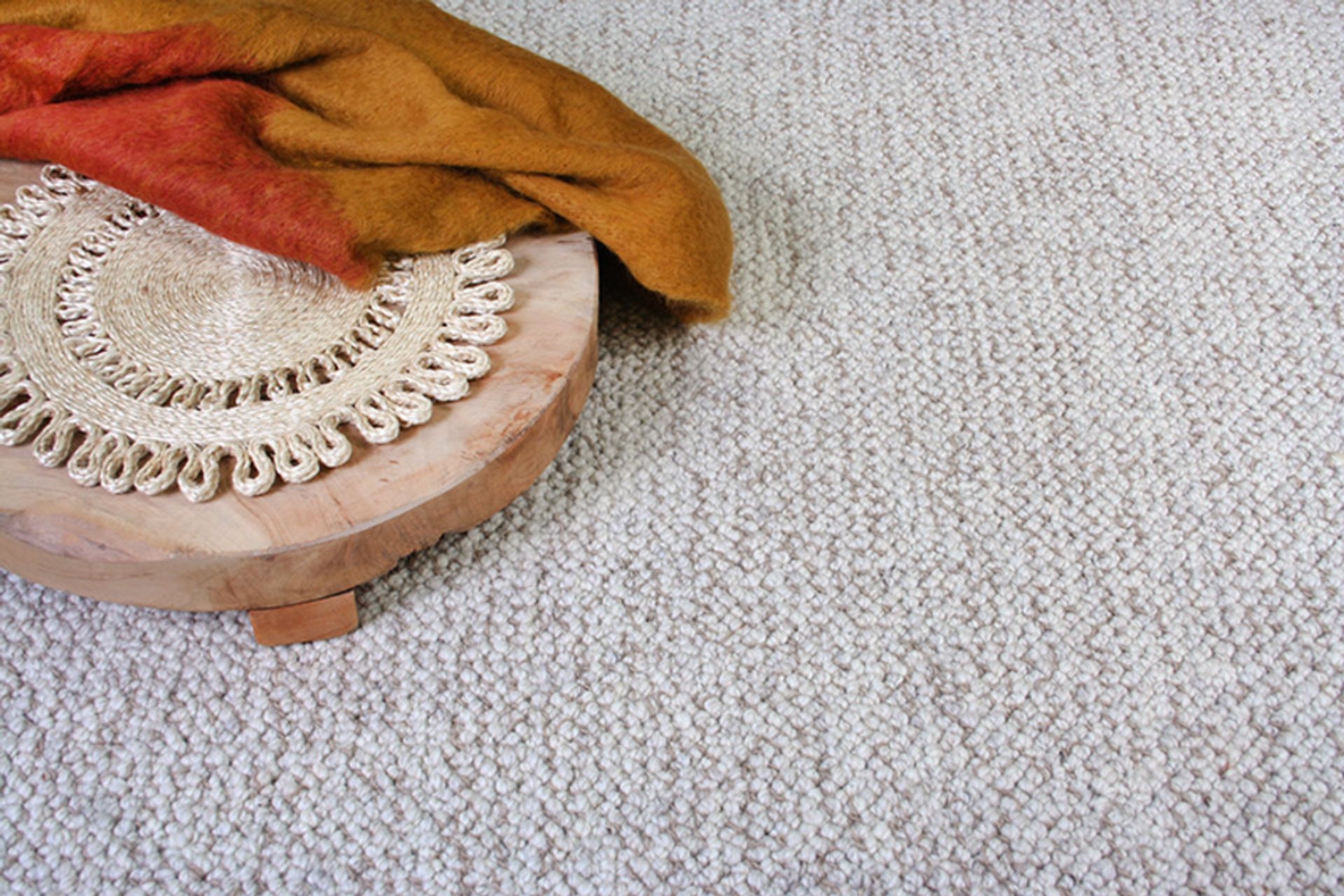
Common types of wool carpet
Like with any flooring material, there are different types of wool carpet available. Here are some of the most common:
Cut pile wool carpet
Cut pile wool carpets are renowned for their plush and luxurious feel. With evenly cut yarns, they offer exceptional softness and durability. This type of carpet is available in various styles, including Saxony, plush, and frieze, providing a cosy and elegant flooring option.
Berber wool carpet
Berber wool carpets feature looped pile construction, where the yarn forms loops on the surface. This style, inspired by traditional Berber carpets, is highly durable and resistant to wear and tear. Berber carpets often have a textured or flecked appearance, adding a unique and stylish touch to any space.
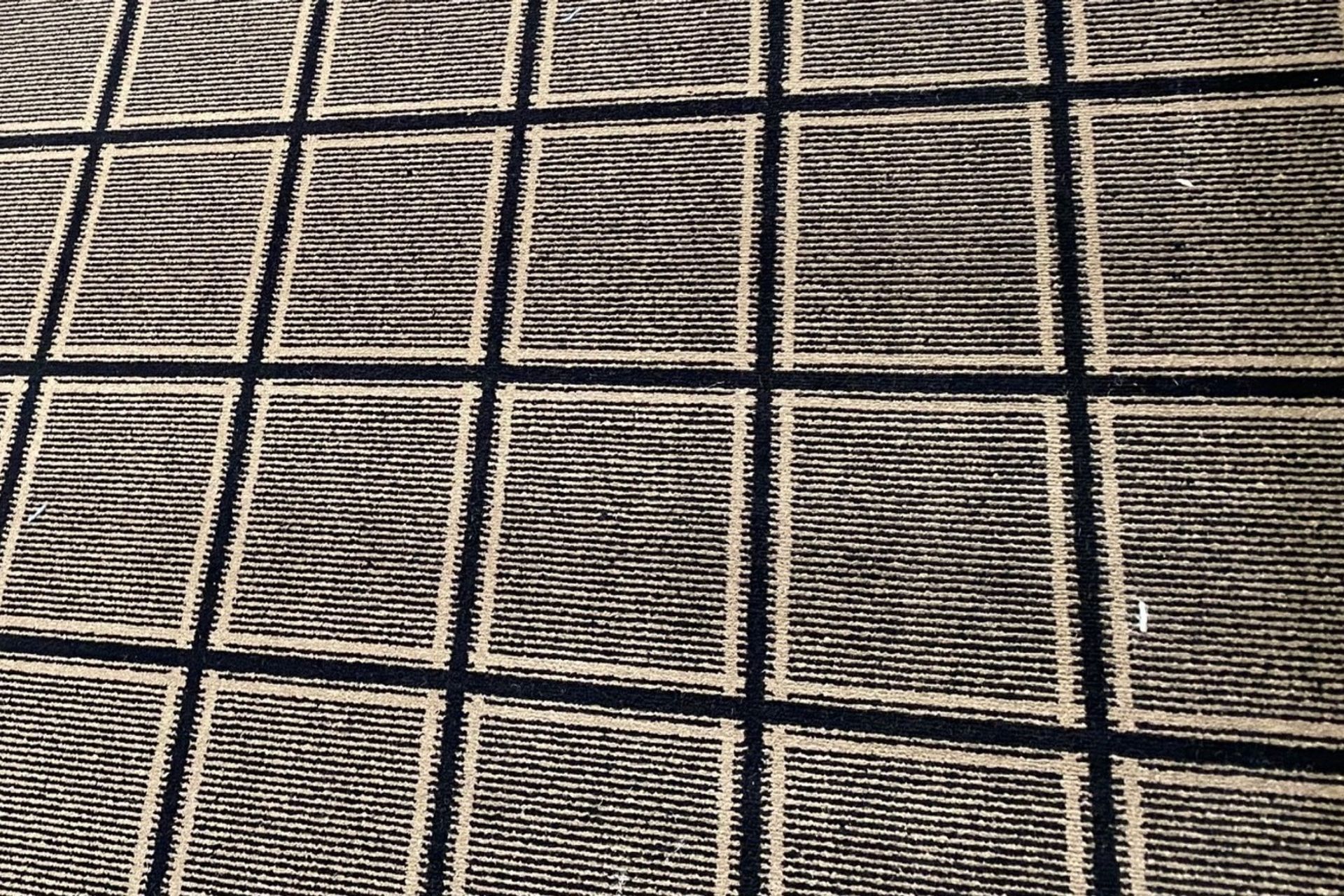
Axminster wool carpet
Axminster wool carpets are crafted using a specialised weaving technique that combines cut pile and loop pile yarns. The result is intricate patterns and designs that exude elegance. Axminster carpets are favoured in high-end residential and commercial settings, offering both luxury and durability.
Wilton wool carpet
Wilton wool carpets earn recognition for their durability and beautiful patterns. They weave them using a continuous strand of yarn, producing a carpet with various intricate designs. Wilton carpets offer timeless charm and long-lasting performance, with traditional and modern options available.
Flatweave wool carpet
Flatweave wool carpets offer a flat surface without any pile. They are woven using a technique that produces a sturdy and reversible carpet. Flatweave carpets are popular for their practicality and durability. Their easy maintenance and versatility make them a go-to choice for many homeowners.
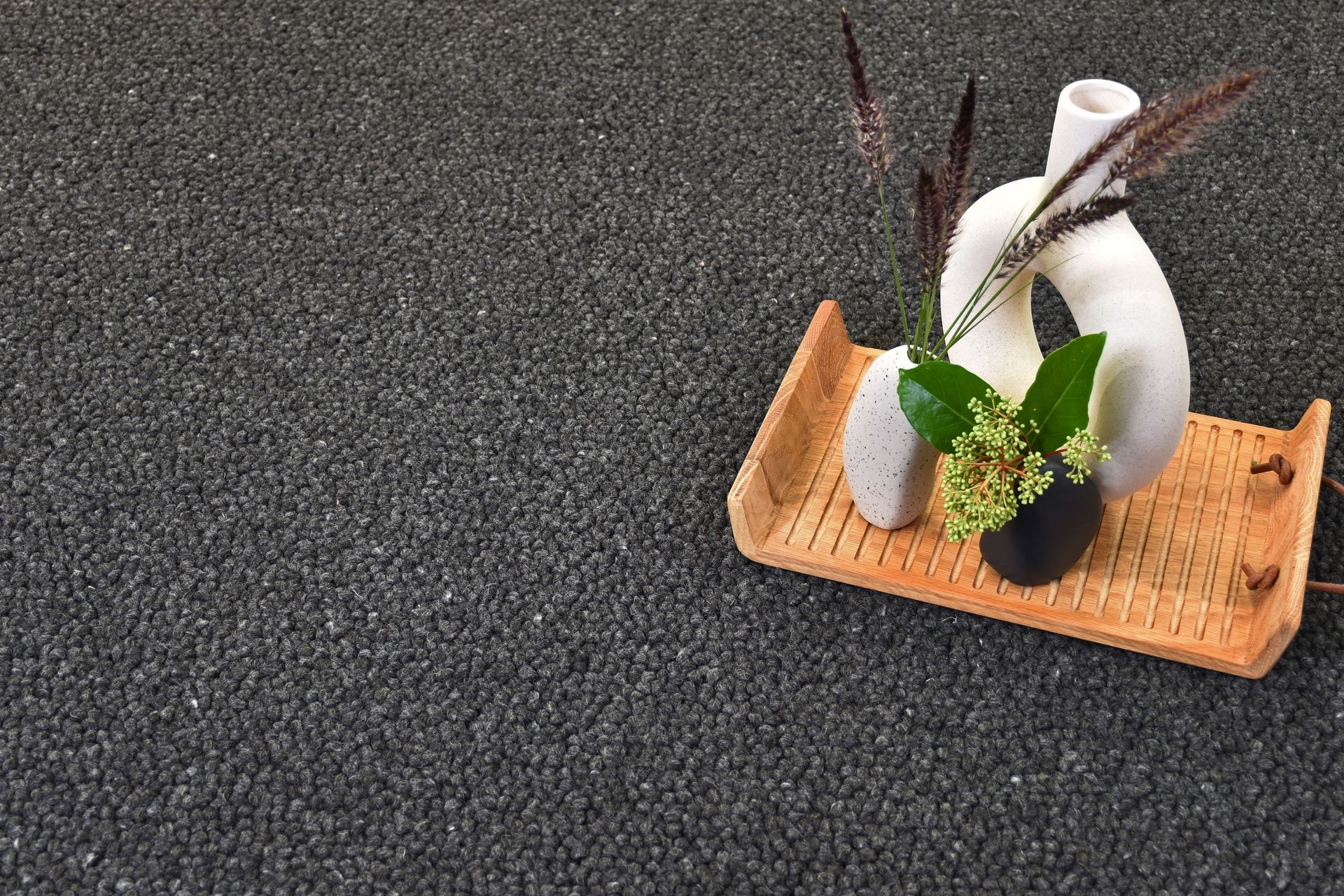
Choosing the right wool carpet for your living space
Apart from the different types, there are additional considerations to keep in mind when selecting a wool carpet for your home:
Understanding different wool grades
Different grades of wool can vary in quality and performance, with higher grades often offering enhanced durability and resilience. Considering wool blends and treatments can provide options that cater to specific needs, such as increased stain resistance or improved fire retardancy.
Evaluating carpet construction and density
The construction and density of a wool carpet can significantly impact its durability and appearance. A well-constructed carpet with a higher density will generally be more resilient and better at withstanding foot traffic. Opting for professional installation is advisable to ensure the carpet is laid correctly and to maximise its longevity.
Consider lifestyle factors
When choosing a wool carpet, it's important to consider individual lifestyle factors. Factors such as foot traffic, usage patterns, and the presence of pets or children can influence the appropriate carpet choice. Selecting a carpet that aligns with these considerations will ensure it can withstand the demands of daily life and maintain its performance and appearance.
Wool carpet maintenance tips
Now that we've discussed the advantages, drawbacks, and some of the different types of wool carpets, you may be curious about how to care for and maintain them. Here are some pointers:
Regular vacuuming
Vacuum your wool carpet at least once a week to remove dust, dirt, and debris. Doing so helps prevent the accumulation of particles that can work their way into the carpet fibres and cause damage over time. Use a vacuum cleaner with a rotating brush or a beater bar attachment for effective cleaning. Be gentle while vacuuming to avoid damaging the delicate wool fibres.
Immediate spill clean-up
Accidents happen, so it's crucial to address spills immediately. When a spill occurs, act quickly and blot the spill with a clean, absorbent cloth or paper towel to soak up the liquid. Avoid rubbing the spill, as it can push the stain deeper into the fibres and make removing it more difficult. Work from the outer edges of the stain towards the centre to prevent spreading. For more stubborn stains, such as ones caused by an oily or greasy substance, consult a professional carpet cleaner for guidance.
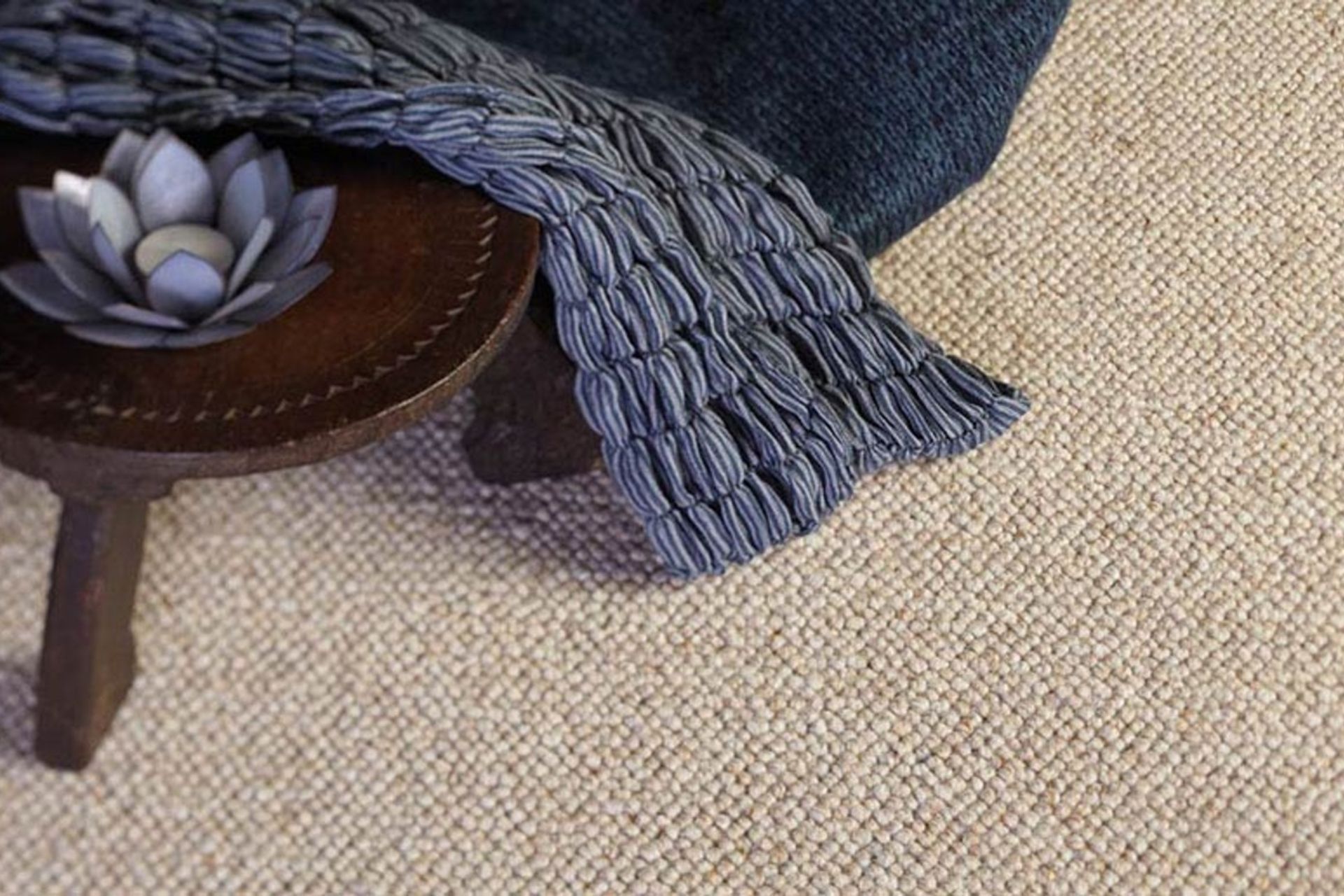
Regular deep cleaning
In addition to regular vacuuming, wool carpets benefit from periodic deep cleaning. Deep cleaning can be carried out using a carpet cleaning machine or by hiring a professional cleaning service. Follow the manufacturer's instructions or seek professional advice to ensure you use the right cleaning products and techniques for your wool carpet.
Preventive measures
Take preventive measures to protect your wool carpet from excessive wear and tear—place doormats at the entrances to trap dirt and prevent it from being tracked onto the carpet. Consider using carpet runners or area rugs in high-traffic areas to reduce direct contact with the wool carpet. Rearrange furniture periodically to distribute the weight and prevent uneven wear.
Sunlight protection
Wool carpets can be susceptible to fading when exposed to direct sunlight for extended periods. To prevent fading, use curtains, blinds, or UV-protective window films to block out excessive sunlight. Rotate the position of your furniture or use rugs to create shade in areas exposed to direct sunlight to help ensure you have a properly maintained wool carpet.
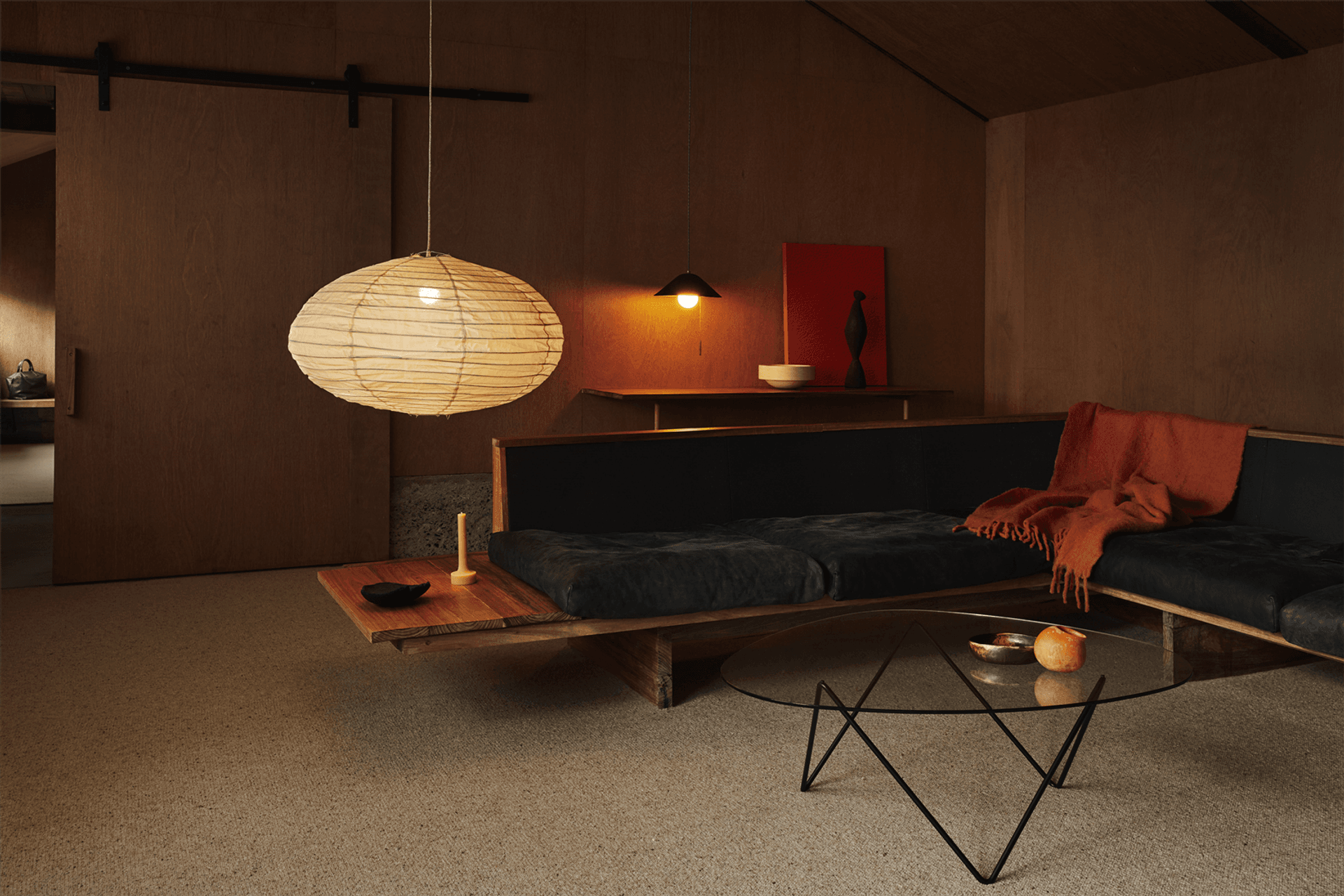
Is a wool carpet a good choice for your home?
Wool carpets are an excellent option for homes needing a practical, long-lasting flooring solution. They are especially ideal for bustling households prone to spills, as wool can withstand wear and tear while maintaining its shape over time. Beyond durability, wool’s natural fibres add a layer of warmth and comfort to a space. Finally, remember that with proper cleaning and maintenance, a wool carpet will continue to gleam and look plush for many years to come.
Related article: How to choose the right type of carpet for your home
